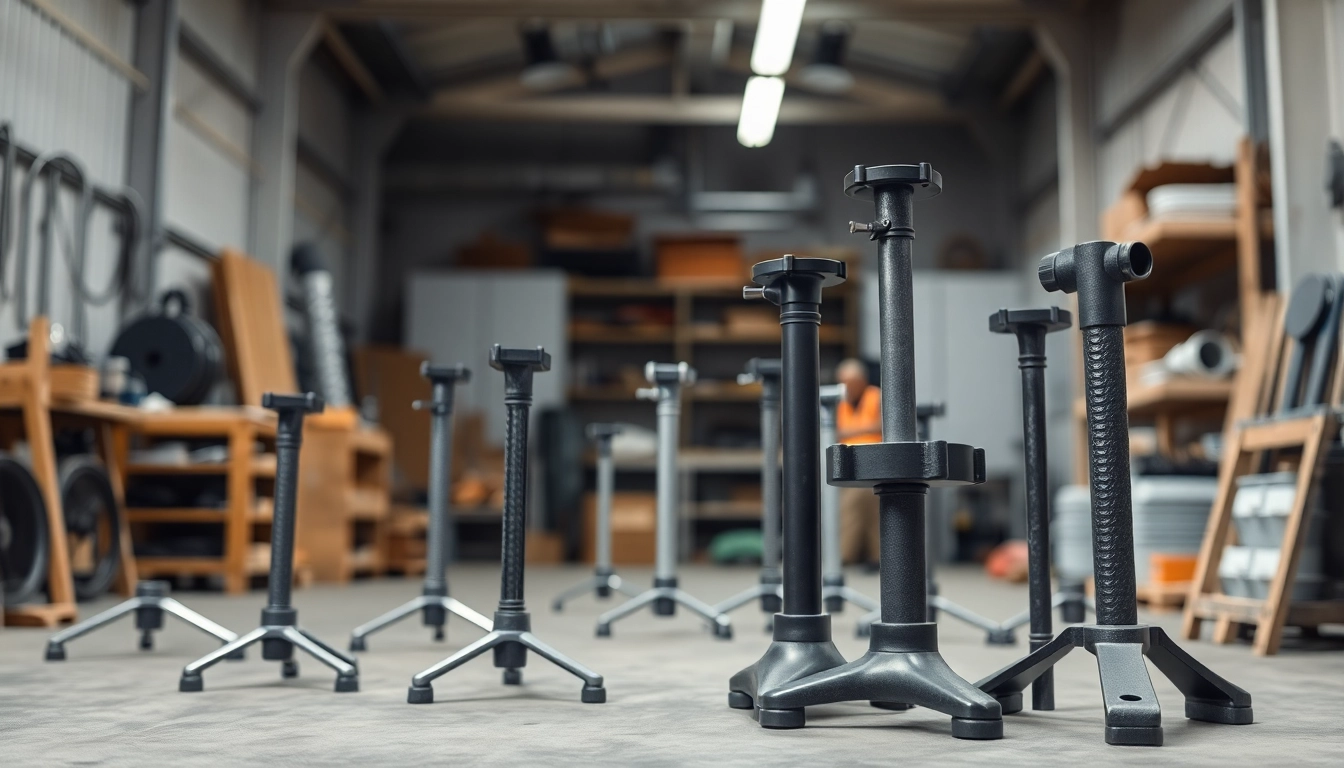Understanding Pipe Stands
In various construction and manufacturing projects, ensuring that heavy or cylindrical materials are supported safely and effectively is crucial. One of the key tools that facilitate this process is the pipe stands. These stands provide a stable base for pipes and other similar structures, significantly enhancing safety and efficiency in handling. This comprehensive guide will delve into the world of pipe stands, exploring their types, benefits, and what to consider when choosing the right ones for your projects.
What Are Pipe Stands?
Pipe stands, also known as pipe jacks or pipe supports, are devices designed to hold pipes in an upright position during various operations, such as welding, cutting, assembling, or installation. Typically constructed from durable materials such as steel or aluminum, these stands provide essential support for pipes of varying lengths and diameters.
Types of Pipe Stands Available
Pipe stands come in various sizes and styles, each tailored to meet specific needs and applications:
- Fixed Pipe Stands: These are sturdy and provide a permanent location for pipe support. They are often used in welding and heavy equipment operations.
- Adjustable Pipe Stands: Featuring telescopic designs, these stands allow users to adjust the height to accommodate different pipe sizes and applications.
- V-Head Pipe Stands: With a V-shaped cradle, these stands are perfect for holding round pipes securely, reducing the risk of slippage during operations.
- Foldable Pipe Stands: These stands can be collapsed for easy storage and transport, making them ideal for mobile operations or small workshops.
- Pipe Rollers: Designed to aid in the movement and positioning of heavy pipes, these stands are equipped with rollers for easier material handling.
Key Features to Look For
When selecting pipe stands for your projects, consider the following features to ensure optimal performance:
- Weight Capacity: Assess the maximum load the stand can support, as this directly impacts safety and functionality.
- Material Quality: Look for stands made from high-quality, corrosion-resistant materials for longevity and durability.
- Height Adjustment: Adjustable models offer flexibility for different pipe sizes, providing versatility in various environments.
- Stability Features: Anti-slip bases and robust construction contribute to secure positioning, minimizing risks during operations.
- Portability: If mobility is a factor, lightweight and foldable designs can enhance convenience and ease of use.
Benefits of Using Pipe Stands
Enhanced Stability During Welding
Welding operations demand precise control and minimal movement to ensure quality work. Utilizing pipe stands provides a stable platform that prevents pipes from rolling or shifting during welding. This stability not only enhances the quality of the weld but also reduces the risk of accidents caused by unintended movement.
Increased Safety and Efficiency
Your workforce’s safety is paramount in construction and welding environments. Properly utilized pipe stands significantly minimize the risk of injury caused by handling heavy pipes. By providing secure and stable supports, workers can operate with enhanced confidence, leading to greater efficiency. Efficient setups can minimize downtime and keep projects on schedule.
Adaptability for Various Applications
Pipe stands are versatile tools that can be adapted for various applications. Whether you are in the construction industry, involved in automotive repairs, or performing pipeline work, pipe stands can adjust to suit different use cases. Their compatibility with different pipe sizes and styles makes them essential tools for any workshop or job site.
Choosing the Right Pipe Stands
Weight Capacity Considerations
Understanding the weight of the pipes you will be working with is critical when choosing pipe stands. Ensuring that the stands you select can safely support the weight of your materials will prevent accidents and equipment failures. Most pipe stands have their weight capacities specified, and opting for a model with a higher capacity than required allows for a margin of safety.
Adjustability and Size Requirements
Assess your workspace and the variety of pipe sizes you will handle. Select stands that allow for adjustable height, accommodating various pipe diameters and configurations. Models featuring quick height adjustments can save time during your setup and ensure that you always have the right support for the job.
Material Durability and Longevity
Sustainability in high-demand environments is pivotal. Investing in pipe stands made from galvanized steel, heavy-duty aluminum, or similar materials can extend the life of your tools. Additionally, those with protective coatings to resist rust and corrosion will perform better over time, making them cost-effective solutions in the long run.
Best Practices for Using Pipe Stands
Setting Up Pipe Stands Safely
Proper setup is key to maximizing the safety and effectiveness of pipe stands. Here are several tips to follow:
- Ensure the ground is stable and level before positioning the stands.
- Always utilize the stands in pairs or multiples to distribute the load evenly when working with larger pipes.
- Double-check the locking mechanisms to ensure the stands are securely positioned before commencing work.
- Use additional support when necessary, especially for long pipes, to avoid bending or warping.
Maintaining Your Pipe Stands
Proper maintenance of pipe stands is crucial for ensuring their longevity and performance:
- Regularly inspect for signs of wear, corrosion, or damage, as these can compromise stability and safety.
- Clean the stands after use to remove dirt and debris, which can affect their operation and longevity.
- Lubricate adjustable parts periodically to ensure smooth functionality and extend the life of moving components.
- Store stands in a dry, sheltered location to minimize exposure to moisture and environmental elements.
Common Mistakes to Avoid
Effective use of pipe stands also entails being aware of common pitfalls to avoid:
- Using insufficiently rated stands for heavy loads – always check load capacities before starting work.
- Neglecting to secure adjustable heights – failure to lock stands at the desired height can lead to instability.
- Overloading stands – adhering to maximum capacities can significantly reduce the risk of collapse or tipping.
- Forgetting to inspect equipment regularly – perform routine checks on the equipment to identify potential issues before they escalate.
Where to Buy Quality Pipe Stands
Top Retailers for Pipe Stands
When seeking to purchase quality pipe stands, it is important to source them from reliable retailers. Here is a list of some of the top places to consider:
- Specialized Welding Suppliers: Shops that specialize in welding and fabrication supplies often carry a range of pipe stands suitable for professional use.
- Home Improvement Stores: Places like Home Depot and Lowe’s generally offer adjustable pipe stands that are quality-tested for various job site requirements.
- Industrial Supply Houses: Suppliers like Grainger and McMaster-Carr have extensive selections of pipe supports and stands catering to various applications.
Online vs. In-Store Purchases
The decision between online and in-store purchasing should be based on your specific needs. Online retailers often have a larger inventory with detailed descriptions and customer reviews to guide your purchasing decisions. However, seeing and handling the stands in person may be beneficial, particularly for evaluating size and sturdiness. It may also allow you to receive immediate assistance from store personnel.
Evaluating Vendor Reliability
Evaluating a vendor’s reliability is key before making a purchase. Consider the following factors:
- Check customer reviews and ratings to gauge satisfaction levels with both the product and after-sales service.
- Examine return policies and warranties, as they can offer insight into the vendor’s confidence in their products.
- Look for vendors with industry experience and established presence in the market to ensure knowledgeable support when needed.



